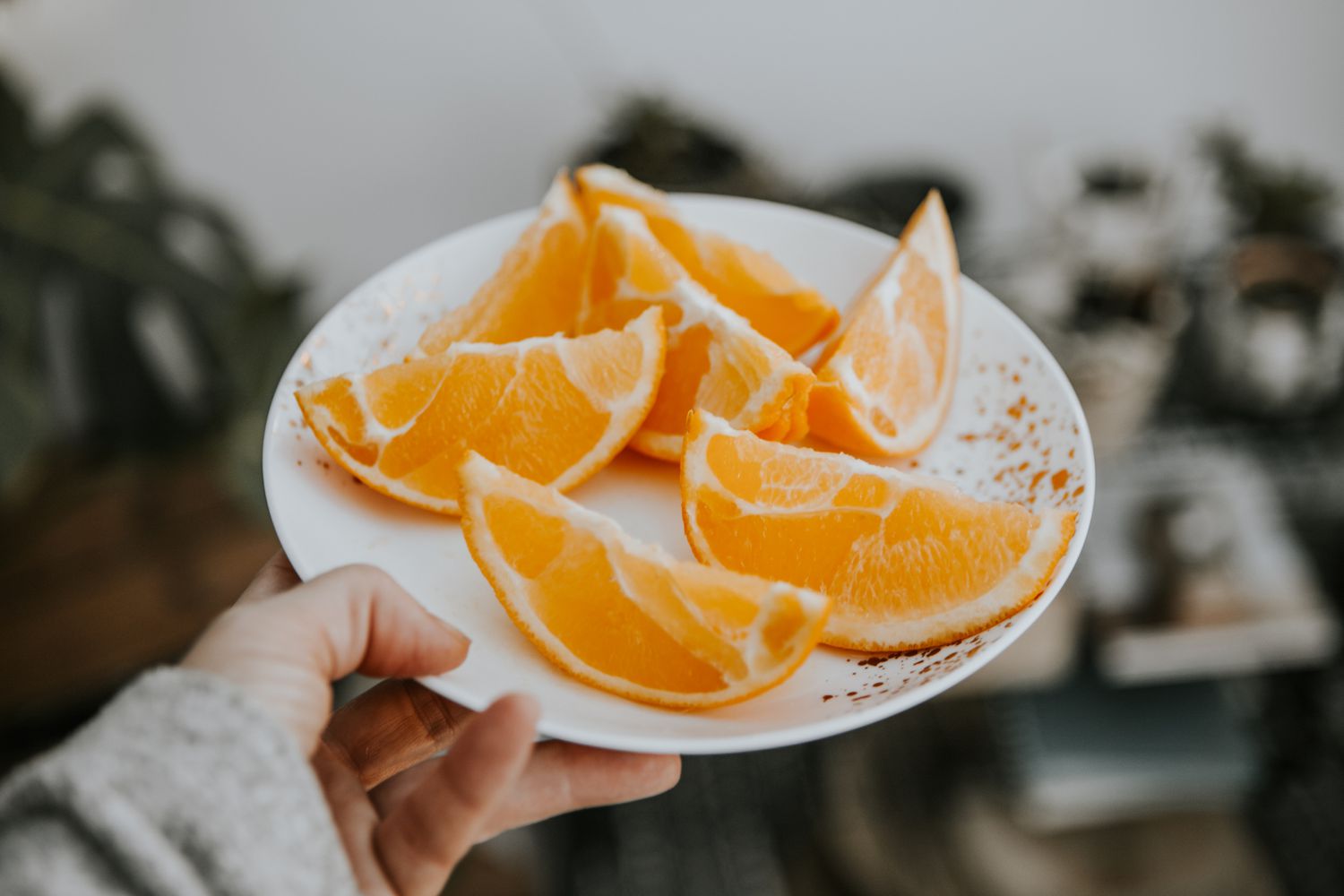Is Eating a Whole Orange, Including the Peel, Truly Beneficial for Promoting Bowel Movements?

A quick fix for constipation might be as simple as eating an orange, complete with its peel. This is according to claims made on social media, which suggest that eating entire oranges (peel included) topped with a hefty dusting of cinnamon and cayenne powder can get your digestive system functioning more efficiently.
Bethany Ugarte-Cameron, the Instagram user behind @LilSipper, an account that focuses on providing recipes for those suffering from irritable bowel syndrome (IBS), posits that a bowl of unpeeled orange slices could be the solution for encouraging prompt bowel movements.
Unquestionably, oranges, cayenne pepper, and cinnamon are healthful foods. Citrus fruits, for example, have an abundance of fiber — a crucial nutrient for maintaining bowel health. But is the combination of these items a sure-fire key to swift access to the rest room?
This article examines the way your body might respond to the consumption of an orange (including its peel), as well as laying out expert-approved approaches to easing constipation.
The viral hack suggests a basic 'recipe' involves cutting a navel orange into pieces, generously sprinkling it with cayenne pepper and ground cinnamon, and eating the entirety of the orange. Ugarte-Cameron asserts that eating oranges in this manner leads to an immediate bowel movement due to the presence of naringenin, a type of flavonoid with laxative properties found in orange peels, in the snack.
The cayenne pepper and cinnamon aren't simply added for taste. Ugarte-Cameron's video explains they play a part in facilitating bowel movements. As per her Instagram post, the spices activate TRVP1 receptors present in your mouth and Gastrointestinal (GI) tract, allegedly encouraging your bowels to become active.
Oranges — in their entirety — are rich in fiber and water, two components acknowledged for their capacity to relieve constipation. An orange, with its peel intact, is 82% water and delivers 7 grams of fiber (28% of the daily recommended intake for women and 18% for men, aged 19-50). However, it's not necessarily the case that oranges harbor specific properties that induce bowel movements.
Amy Brownstein, MS, RD, a registered dietitian and proprietor of Nutrition Digested, posits that the fiber in orange peels is no different from other types of fiber. As a result, despite the impressive fiber content, it's unlikely to provoke an urgent need to use the bathroom.
Danielle VenHuizen, MS, RDN, a registered dietitian and owner of Food Sense Nutrition, emphasizes that a high-fiber diet won't instantly ease constipation. She also notes that although fiber does support frequent bowel movements, it could take hours for the fiber to reach the colon and alleviate constipation.
So how about the flavonoids in oranges that Ugarte-Cameron mentioned? Certainly, oranges contain the antioxidant naringenin; however, no research has proven its laxative effect on humans to date. Even if naringenin does stimulate regular bowel activities, its concentration varies among oranges and an unusually high intake might be necessary for it to be effective.
The assertion that cinnamon and cayenne activate TRVP1 receptors does come with stipulations. Due to their high capsaicin content, these spices, in large quantities, can stimulate receptors that prompt bowel movements. On the downside, the onset of their effect is slow.
In fact, the consumption of cinnamon and cayenne might exacerbate digestive issues. As Brownstein explained, the increased activation of TRVP1 receptors as a result of ingesting these spices might cause more gastrointestinal pain and discomfort, rather than directly stimulate the digestive process.
Furthermore, while orange peels are typically safe to eat, they do pose some health risks. Pesticides and bacteria found on an orange's surface are among these potential threats. Therefore, it's essential to thoroughly clean the peel and consume it sparingly.
Another possible repercussion when eating an orange along with its peel might be an uneasy feeling in the stomach, so it's advisable to gradually increase the amount ingested to test its effect.
The chewiness of orange peel could pose some problems of its own.
“The texture and flavor of orange peels may be difficult to tolerate or aggravate any jaw or chewing issues,” Brownstein said.
If you’d like to try Instagram’s citrus trick, you certainly can—but there are plenty of other, more palatable ways of improving your digestion.
“A better strategy for relieving constipation would be to look at the diet as a whole,” VenHuizen said. “A high-fiber diet with adequate fluid intake is always a good place to start.”
Foods like whole grains, legumes, fruits, and vegetables can all provide a boost to your daily fiber dosage.
Adequate hydration also supports regular bowel movements, so take stock of how much fluid you’re drinking. Increasing your consumption by keeping a water bottle handy throughout the day could make a difference to your bowel habits.
Then again, if you’re looking for a quick fix from fruit, there’s more evidence to support choosing kiwis, rather than oranges. A 2022 study found that eating two kiwis a day may promote regularity.
Ultimately, though, there’s no single constipation-clearing miracle, no matter what social media has to say. For most of us, a well-functioning gut is a long game of lifestyle choices.
“Practicing healthy habits daily and finding the right dietary strategies are the best ways to cure constipation for good,” VenHuizen said.




